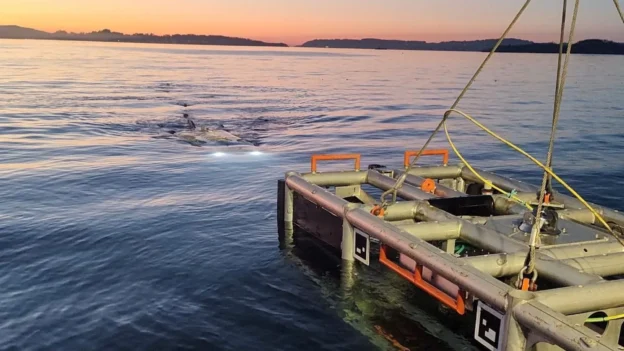TotalEnergies and Oceaneering International announced that the autonomous underwater vehicle, the “Freedom AUV” has successfully completed a pilot pipeline inspection test, demonstrating its efficiency and capability in industrial inspection missions.
Quality and environmental scope
One of TotalEnergies’ objectives is to reduce environmental impact while maintaining the integrity of subsea pipelines. Therefore, the implementation of these technologies reduces time and pollutant emissions by up to 50%.
The Freedom subsea vehicle demonstrated its ability to detect and follow the pipeline while maintaining a precise trajectory over the pipeline. With adaptive behaviors developed to provide additional information about subsea features.
In addition, the AUV performed high-quality operations by collecting the necessary data in a single pass. In addition, pilot tests in the North Sea included the inspection of more than 120 kilometers of subsea pipelines, adding to the 60 kilometers previously inspected close to shore.
The capabilities of the Freedom AUV
On the other hand, autonomous capabilities onboard, along with advanced instrumentation such as a laser scanning system and multibeam sonar technology, enabled detailed inspection of pipeline features. The autonomous pipeline tracking capability ensures that Freedom remains directly over the pipeline at low altitudes, providing a detailed view of the pipeline and surrounding seabed.
Once the inspection missions were completed, automated onboard data processing enabled assessment of mission effectiveness and confirmation of pipeline condition in collaboration with TotalEnergies. The Freedom AUV delivers high-quality data sets at a higher speed.
According to Alan Anderson, subsea robotics product manager for Oceaneering, TotalEnergies specifically designed the project to place challenging demands on the AUV, after collecting required data, and achieve high inspection performance.

Inspecting pipelines with underwater vehicle. Freedom Source: Oceaneering
The Freedom AUV’s capabilities allow for broader missions, including offshore wind energy projectswith the potential for integration with lighter, unmanned surface vessels to further minimize environmental impact.
Follow us on social networks and don’t miss any of our publications!
YouTube LinkedIn Facebook Instagram X
Source and photo: Oceaneering

